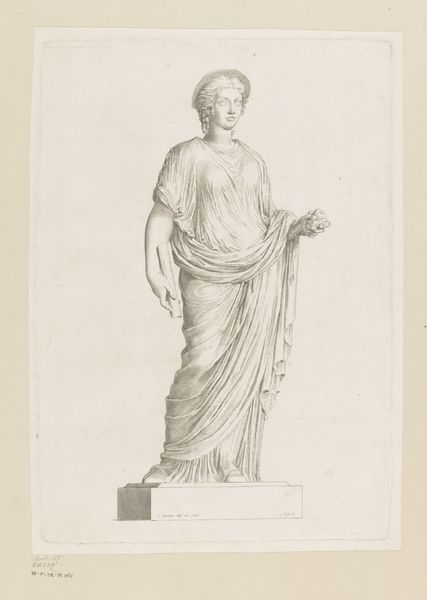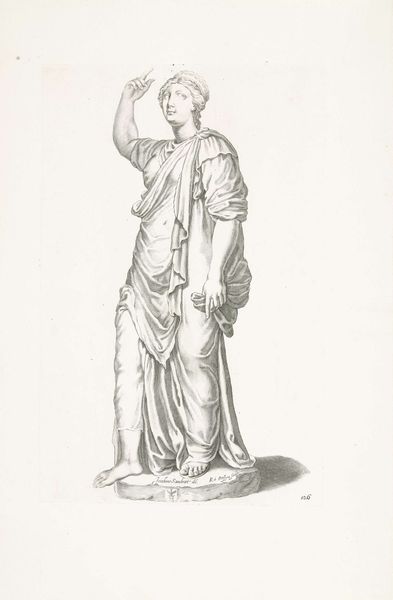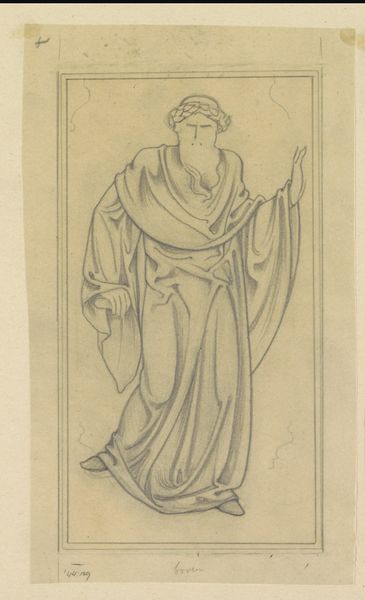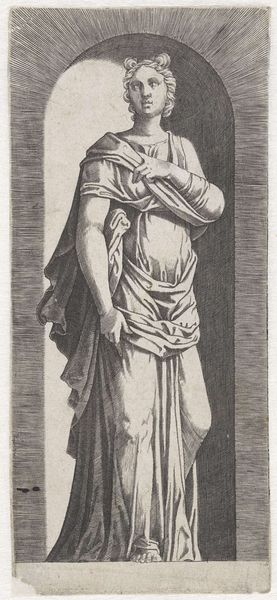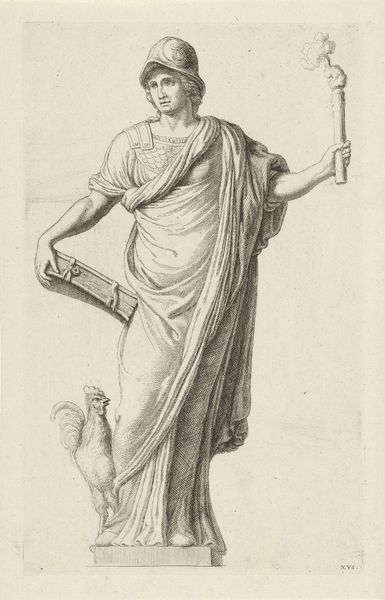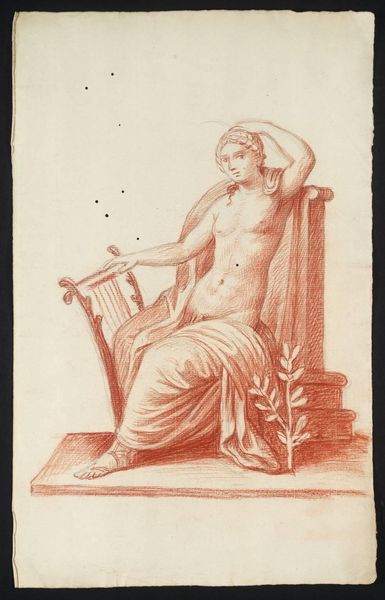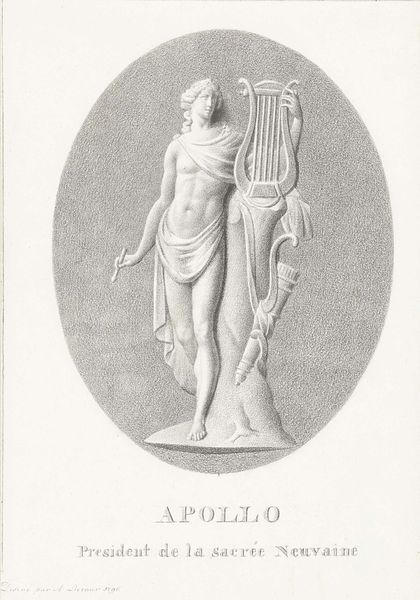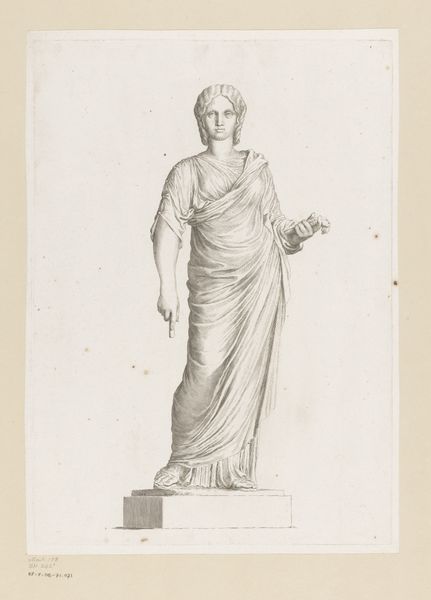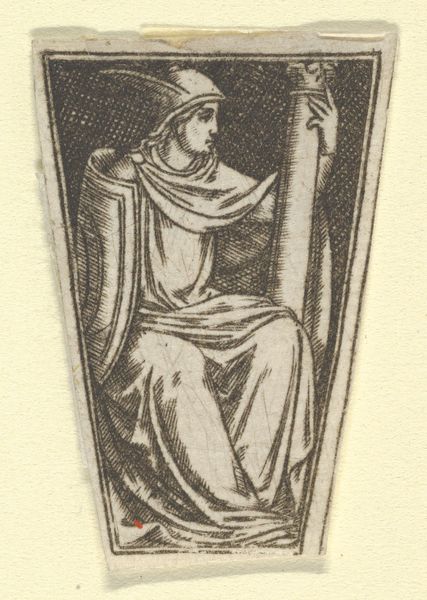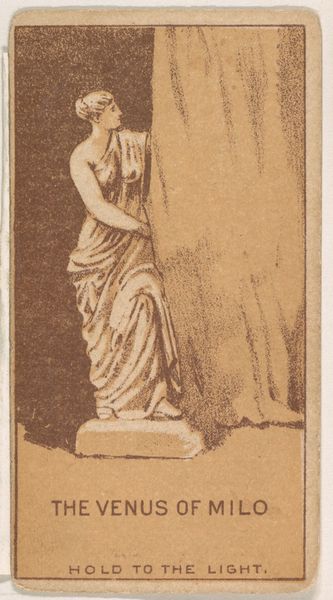
#
comic strip sketch
#
imaginative character sketch
#
junji ito style
#
cartoon sketch
#
personal sketchbook
#
linework heavy
#
idea generation sketch
#
sketchwork
#
sketchbook drawing
#
storyboard and sketchbook work
Dimensions: height 145 mm, width 135 mm
Copyright: Rijks Museum: Open Domain
Editor: This is "Vignet met Minerva," made around 1874-1881 by Smeeton-Tilly. It's a line drawing of Minerva, Roman goddess of wisdom and strategic warfare. I'm struck by the clean lines and how they suggest a classical statue, almost like a blueprint for one. What jumps out at you? Curator: What I find compelling is how this seemingly simple sketch reflects the evolving relationship between art and industrial reproduction during the late 19th century. Look at the precision of the linework; it almost anticipates mechanical reproduction techniques. How does this relate to craft traditions? Editor: I see what you mean. The level of detail does make it seem like it could be easily transferred to a printing press. It raises the question of whether it’s a unique artwork or a design meant for wider consumption. Does that change our view of its artistic value? Curator: Precisely. We have to consider the economic conditions surrounding art production at the time. Artists were increasingly designing for mass production, blurring the lines between 'high art' and commercial design. Minerva, typically a symbol of elite culture, is being made available to a broader public. Who exactly did the artist envision consuming this image? Editor: That's a fascinating point. I hadn't thought about the social implications of Minerva's image becoming potentially widespread. So it's not just about the image itself, but the changing systems of art production and distribution. Curator: Exactly! It encourages us to think about who controlled those systems and how the artwork participates in social exchanges and economic realities. How labor practices inform these art making? Editor: Thinking about this piece in terms of materials and production really opened my eyes to its context and possible meaning beyond the purely aesthetic. Curator: Indeed! Analyzing the artwork’s materiality and its place within production unlocks an understanding of how art, culture, and society are intertwined.
Comments
No comments
Be the first to comment and join the conversation on the ultimate creative platform.

